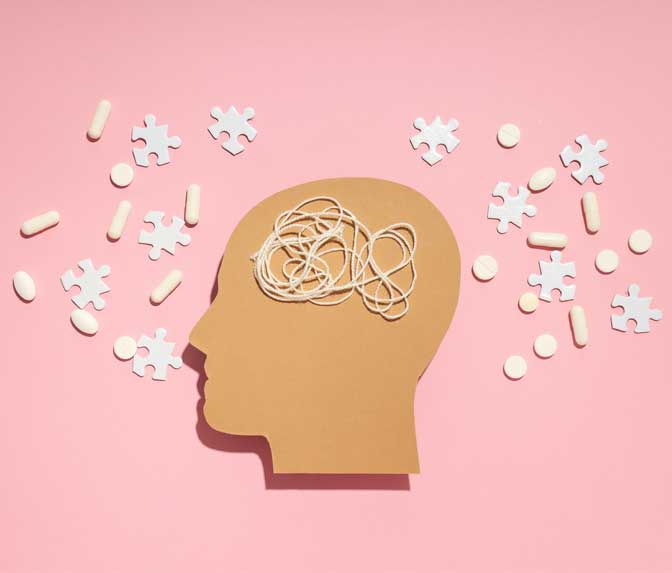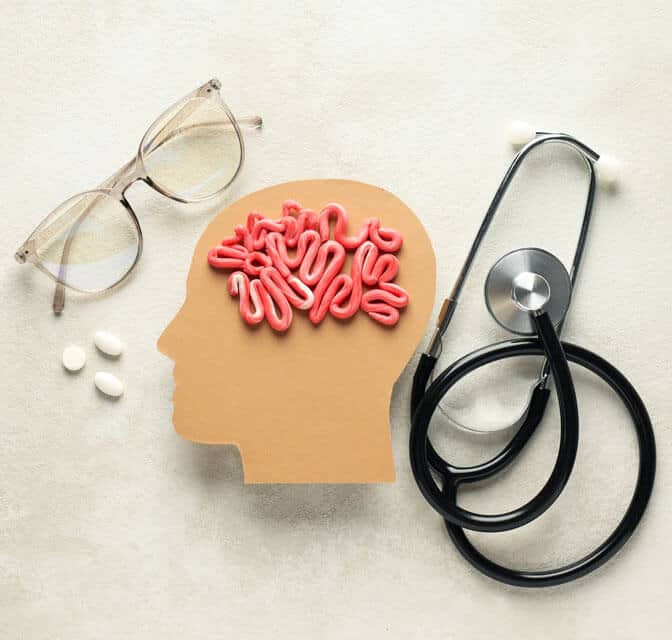Learn more about ADHD here and find out if your symptoms match ADHD.







ADHD begins in childhood and is therefore classified as a neurological developmental disorder. This means that the causes lie in the structure of the brain and therefore often lead to a chronic course into adulthood.

People with ADHD exhibit a disorder of attention, particularly during activities that are either cognitively demanding or boring for the person concerned. This affects both sustained attention, also known as sustained attention, and selective attention, i.e. focusing on certain activities while simultaneously ignoring irrelevant stimuli.
In concrete terms, this means not paying close attention to details and making careless mistakes more frequently. Symptoms in this category also include difficulties following instructions and keeping order. In addition, mentally demanding or boring tasks are avoided and less attention is paid to them.
Those affected report that they find it difficult to follow longer conversations in particular. Maintaining constant attention is very difficult. Do you frequently misplace your keys or wallet? Do you procrastinate, especially on tasks that seem either very demanding or very boring? Do you feel like you’ve made more careless mistakes in schoolwork than your classmates? These could all be signs of ADHD.
Motor restlessness, which is particularly noticeable in quiet situations, and the feeling of being internally driven often prevent people with ADHD from realising their full potential. They find it challenging to sit still for long periods of time, whether in class, at work or in social situations. This often manifests itself in fidgeting, uncontrolled movements or a constant need to move. Another characteristic is impulsiveness in actions and decisions. Those affected often act without thinking for long, interrupt others in conversation or tend to engage in risky behaviour. These difficulties can have an impact on school, work and social relationships, as it is more difficult to control impulses.
Many report that they find it difficult to stick to rules or routines. For example, they find it difficult to sit still in meetings or lectures. Those affected stand up more often for no apparent reason, walk around or quickly feel bored. Do you find yourself playing with objects or constantly looking for new stimuli? Do you feel impatient, especially when things don’t happen immediately? Do you often interrupt conversations or say things that you later regret? These can all be signs of ADHD.
There are three types of impulsivity in ADHD: cognitive (rash behaviour), motivational (inability to postpone needs) and emotional (low frustration tolerance). Typical symptoms are difficulties waiting and frequent interruptions in conversations. Those affected often act spontaneously without weighing up the possible consequences, which can lead to problems in social, academic or professional situations. The lack of impulse control in stressful or emotionally charged moments is particularly challenging. People with ADHD often have difficulty controlling their reactions – be it in the form of rash comments, impulsive purchases or sudden mood swings. This impulsiveness can lead to misunderstandings, conflicts and frustration in everyday life.
Do you know the feeling of wanting to give an answer before someone has finished their sentence? Or do you find it difficult to stay calm in a queue? People with ADHD report that they often make rash decisions without weighing up all the options. This can range from small things like spontaneous spending to risky behaviour in certain situations. Do you quickly become impatient or angry if something doesn’t work out immediately? Do you sometimes overreact to small things? These can all be signs of ADHD.







Then this could also indicate that you have ADHD. To find out more, take our self-test
or contact one of our experts.



Adding {{itemName}} to cart
Added {{itemName}} to cart